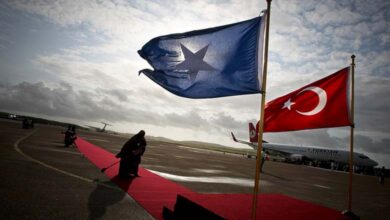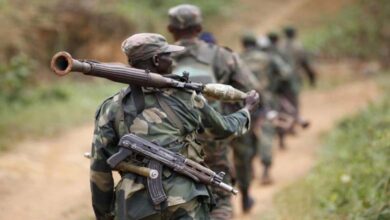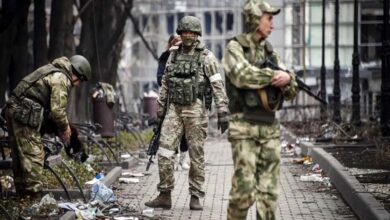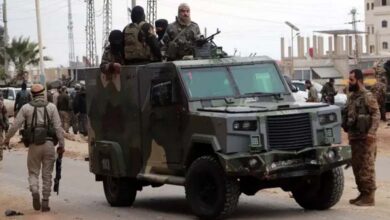How Did Hamas Leader Fall into the Beggar and Vendor’s Trap? Details of the “Ghost” of Hamas Assassination

In a story reminiscent of Hollywood films with their captivating plots, new details have emerged regarding the assassination of Mohammed Deif, the military leader of Hamas‘ Al-Qassam Brigades.
-
Meta Apologizes to Malaysia for Removing Condolence Messages Regarding the Killing of Ismail Haniyeh
Disguised agents posing as vegetable sellers and beggars were part of a secret operation to infiltrate Gaza and locate Mohammed Deif, the military leader of Hamas. This was revealed by the “Jewish Chronicle” website concerning the details of Deif’s assassination, which Hamas has not confirmed, despite Israel announcing his death.
Beggars and Vegetable Vendors
The details on the “Jewish Chronicle” website, which have not been officially confirmed by Israel, claim that “Israeli soldiers disguised as beggars and vegetable sellers were key to a bold operation planned by Israel to assassinate Deif, known as the ‘Master of Camouflage.'”
-
Israel arrests Ismail Haniyeh’s sister to pressure in the prisoner swap deal
-
How the Brotherhood’s Media Handled Haniyeh’s Assassination: Has Hamas Lost Its Importance to the Brotherhood?
Until now, the details of how the Israelis managed to assassinate Mohammed Deif, Hamas‘ top military leader and the architect of the October 7th attack, were unknown.
However, the missile strike that killed him, along with his deputy Rafah Salama, in the Mawasi area west of Khan Younis last month, only occurred after a covert operation was carried out in Gaza by a special team of the Israeli army that pinpointed his location, according to the same source.
Based on interviews with security sources, an agent posing as a vegetable vendor in the market in front of the building that Deif regularly visited was involved in the operation.
-
From Yassin to Haniyeh… Key Hamas Leaders Targeted by Israel
-
Who is the leader Ziyad al-Nakhalah, companion of Haniyeh before his death in Iran?
The site adds that the escape plan for the Israeli agents had to be changed at the last minute.
These details about Deif’s assassination come amid speculation about Israeli assassination methods recently targeting high-ranking Hamas leaders, including the movement’s political bureau chief, Ismail Haniyeh, as well as Hezbollah Secretary-General’s military advisor, Fouad Shukr.
The “Master of Camouflage” Caught in a Trap
The details reveal that Israel had been aware for months that the man Tel Aviv considers the “architect” of the October attack was becoming a regular visitor to the targeted building in the Mawasi area.
-
Iran seeks to spread chaos with the help of Nasrallah and Haniyeh – Details
-
Should Israel Be Wary of Stage Qatar Gives Haniyeh, As Confrontation With Hamas Enters Its 8th Day?
According to the site, Deif would meet with Hamas colleagues in this building to receive updates on the movements of the Israeli army in the area, as well as the situation regarding food and medical supplies for displaced people in Gaza.
After receiving reliable information from collaborators and Israeli undercover units in the area about the likely timing of Deif’s next visit, the army began planning his assassination.
Upon assessing the information, they were surprised to find that the man who had taken strict security precautions for thirty years was mysteriously beginning to ignore these rules and reside in the same residential building west of Khan Younis.
-
From Underground… How Does Yahya Sinwar Communicate with Hamas Leaders Inside and Outside Gaza?
-
The Muslim Brotherhood blesses the appointment of Sinwar… An expert affirms it is illegitimate and contrary to the regulations of Hamas and the Muslim Brotherhood
However, after verifying this change in Deif’s security measures, where Israel feared he might actually be using various disguises during his visits, the army realized that this presented an opportunity to exploit this unprecedented failure of the “Master of Camouflage,” a nickname he earned due to his extreme caution after thirty years of unsuccessful attempts to eliminate him.
How Did the Operation Begin? And How Did They Disguise as UNRWA Workers?
The surveillance missions conducted by drones and other fighter jets began sending information to the Israeli command center.
-
Fearing Devastating Effects, Iranian President Urges Supreme Leader Not to Attack Israel
-
Illusory Optimism or New Pressures: What Lies Behind American Claims About Ceasefire Negotiations in Gaza?
The secret team “Duvdevan” arrived in the area and began searching among the displaced.
Some team members posed as UNRWA workers distributing aid, while others posed as religious figures uplifting the morale of displaced persons.
The clothes they wore were chosen for their ability to make physical and verbal contact with displaced Gaza residents to gather as much information as possible.
Two other undercover agents were stationed in the displaced persons camp near the building, tasked with recording Deif’s arrival time.
One of them, disguised as a vegetable vendor, had placed his cart right in front of the main entrance of the building where Deif was supposed to enter.
-
Washington Foils Iranian Plot to Assassinate Officials in Retaliation for Soleimani’s Killing
-
Israel’s Withdrawal and Gaza’s Return to Palestinian Authority: Abbas’s Vision for the Post-War Era
The other sat near the same entrance, disguised as an elderly man wearing torn clothes, appearing to be an old beggar.
On Saturday, July 13, the visit was confirmed. After the members of the undercover team relayed this information to the command center in Israel, the security cabinet quickly gave the green light to launch the operation.
Without a precise time for Deif’s arrival, the air force commander ordered two fighter jets to hover over the area at an altitude sufficient not to be detected. They remained in place for seven hours, waiting for “the target” to enter the building.
-
Are the Muslim Brotherhood Intervening in the Appointment of a New President for Hamas? What’s the Context?
-
Hamas Suspends Truce Negotiations After Assassination Attempt on Deif
One of the pilots then spotted suspicious movements of Hamas elements east of the displaced persons camp, in an area supposed to be the escape route for the Israeli agents.
The operation commander, fearing for his men’s safety, immediately implemented a new exit plan.
The ground forces members were directed towards the sea (only 100 meters away) as soon as Deif entered the building, instead of heading east towards Israel as initially planned.
-
Hamas is rebuilding its forces in Gaza by recruiting thousands of new fighters
-
Thirst crisis worsens: Water in Deir al-Balah more precious than gold
The message was transmitted to the disguised agents via a small hidden earpiece.
Deif Enters the Building
After several hours of waiting, both in the command room in Israel and among the forces on the ground, Deif was finally spotted entering the building.
The signal was given, and the ground forces quietly made their way to the sea, as if strolling down a street in Tel Aviv. They were then picked up by an Israeli navy ship without raising suspicion.
-
Hamas has lost half of its fighters in the Gaza war
-
Israel’s Alternative Plan in Rafah: Secrets of American Negotiations to Stop Occupation Massacres
Five minutes later, the two jets began launching gradual attacks on the target, the first completely destroying the building, and the second launching a barrage of bombs around the building to prevent Hamas from attempting to rescue Deif and Salama.
The final phase involved firing a missile capable of piercing shelters and reaching the basement.
Israeli informants had reported that the building had a basement, prompting the pilots to use a sophisticated missile capable of penetrating the building, then the basement before exploding.
-
Blinken Calls on Regional Countries to Pressure Hamas to Accept Biden’s Proposal
-
Arab and International Presence at Raisi’s Funeral
The assumption was that Deif would try to take refuge in the basement, and according to information obtained after the incident, that is what he did. That’s why it took the army two weeks to confirm his death, as it was necessary to remove the debris surrounding his body.
However, the death of his deputy, Rafah Salama, was confirmed the day after the attack, as he was killed on the first floor.
To date, Hamas has not confirmed Deif’s death. The above-mentioned information comes from the “Jewish Chronicle” website.












